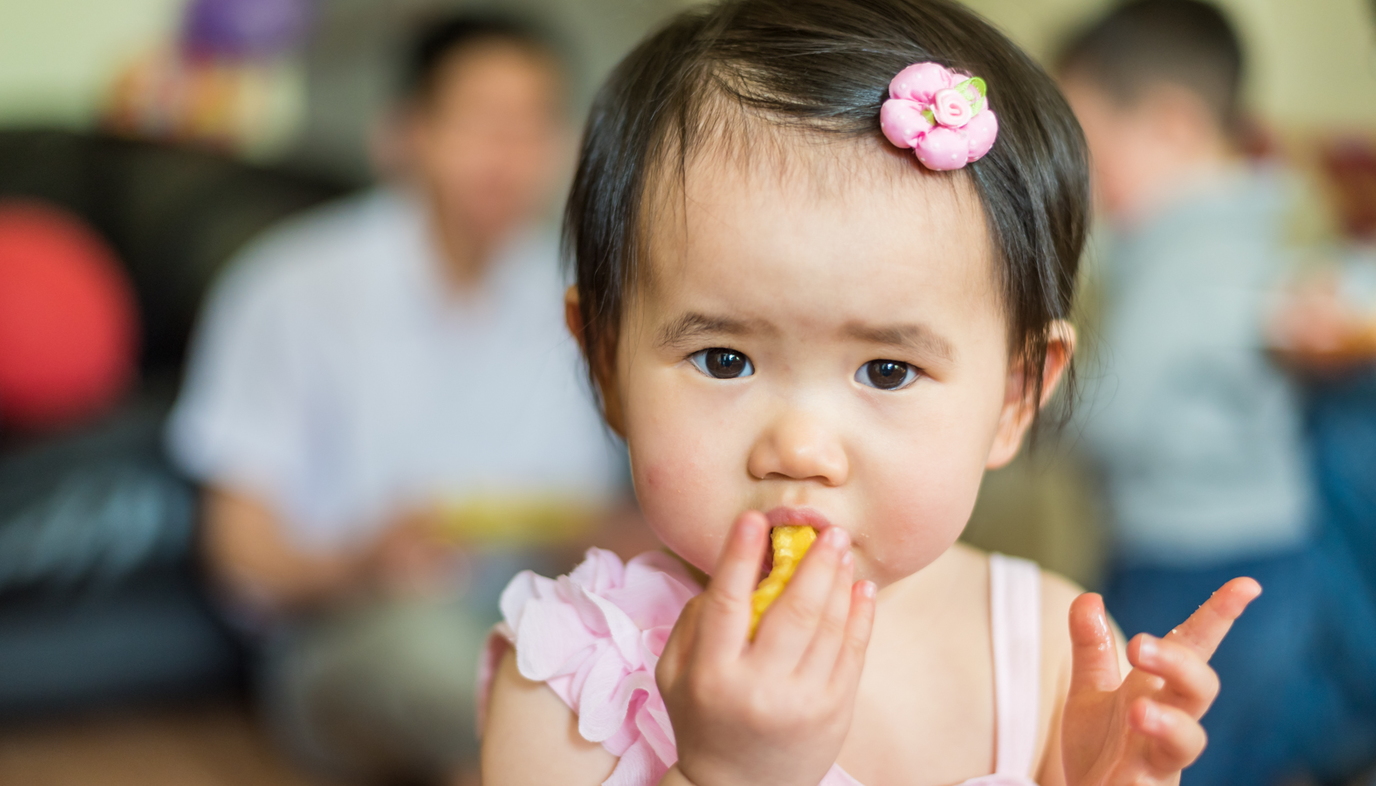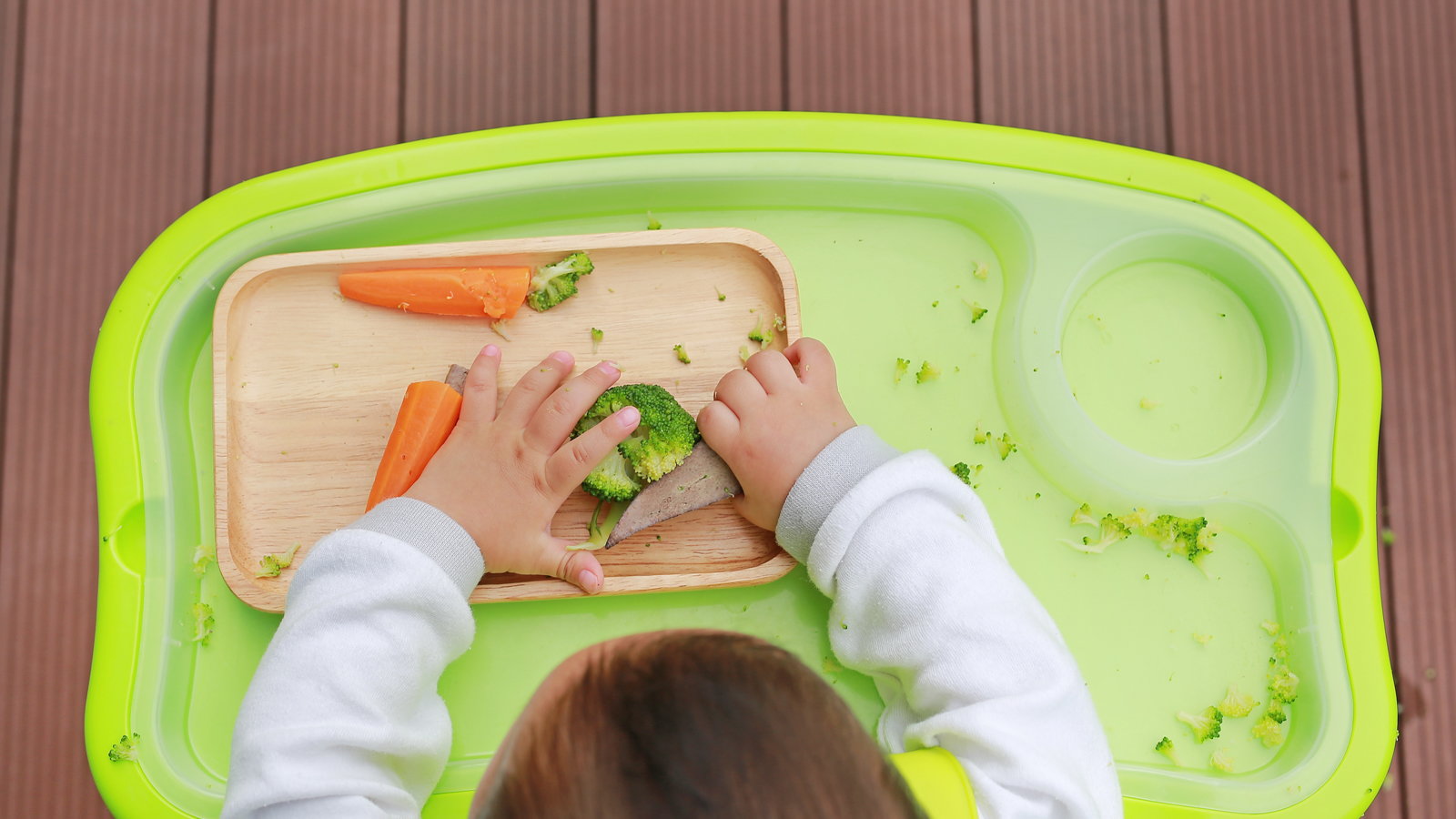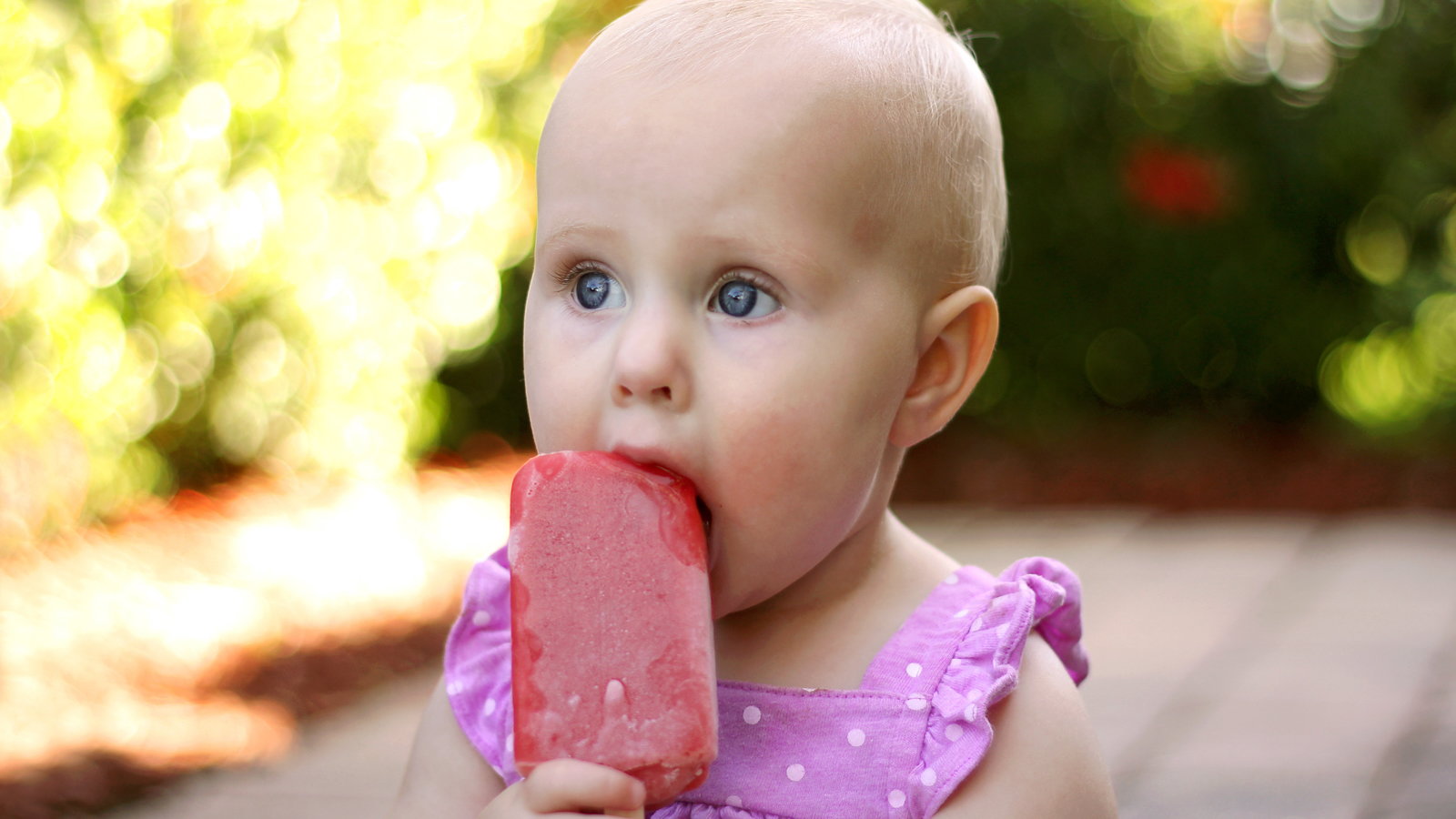
 Finger foods are a wonderful way to introduce your baby to various tastes and textures, and will help to encourage independent eating. Your baby will enjoy the process of feeding himself as well as the variety of foods that you offer.
Finger foods are a wonderful way to introduce your baby to various tastes and textures, and will help to encourage independent eating. Your baby will enjoy the process of feeding himself as well as the variety of foods that you offer.
How can you tell if your baby is ready for finger foods? There are two schools of thought about this one. Some people believe that finger foods should be offered first, and in many cases instead of purées. Others believe that purées should be offered first, and when babies are developmentally ready to pick up, bite, chew, and swallow finger foods, they can be offered, somewhere after nine months. Personally, I think that there is no reason why the two approaches can’t be combined. If your baby is a confident eater, offering a variety of finger foods alongside purées is a good way to accustom him to different textures and tastes, and also encourages him to learn the basics of self-feeding.
The Finger Food Phase
Babies naturally begin to pick things up and explore them, inevitably putting them into their mouths, at around five or six months. From this point on, offering food instead of a toy can provide a nice introduction to the exciting world of food! Be careful what you choose: your baby should be able to gnaw the food without choking or gagging, and be able to derive enough taste by working on it with his gums or budding teeth. Always supervise your baby when he is eating finger food, no matter what his age.
I would suggest offering finger foods at every mealtime, alongside your baby’s normal purées, but only after you have established several different fruits, vegetables, and other foods that have been successfully introduced, without any adverse reactions or effects. I’ve also found that it’s useful to have a bowl with several different compartments for holding a range of different finger foods.
Try beginning with easy-to-manage pieces of fruits (melon, apple, banana, kiwi fruit), lightly steamed vegetables (carrot, broccoli, green beans), little sandwiches with healthy fillings, rice cakes, small chuncks of cheese, hard-boiled eggs, healthy whole-grain breakfast cereals, berries, dried fruits, well-cooked pasta shapes, toast wedges, and the like. Choose brightly colored fruits for their enhanced nutritional value, and whole-wheat goodies over those that have been refined.
Offering finger foods will help to teach your baby to feed herself, and increase her food repertoire. If she picks something up and tastes it, she may not like it to begin with or for the first few times she tries it, but eventually she may consider it to be familiar enough to eat. The more you encourage this process, the easier the transition to independent eating will be.
Annabel Karmel is a leading children’s author who has written 17 bestselling books. She has frequently appeared on Regis and Kelly, The View, The Today Show, and The Early Show. First Meals and More: Your Questions Answered is available now in bookstores.
Peach Melba Popsicles
Fresh fruit popsicles are great for soothing sore gums when your little one is teething, and for bridging the gap between purées and solid food. They are also a great way to get more fluids into your sick child. This is a lovely combination of fruits, but these would also be tasty made with peaches and strawberries.
Ingredients:
2 large, ripe peaches
1 ½ cups fresh or frozen raspberries (or you could use strawberries)
1 ¼ cups of peach or apple juice
2-3 tbsp sugar (optional)
Directions:
1. Peel the peaches, then quarter them and remove the pits. Put the peaches and berries in a blender with half the juice and blend to a purée. Press the purée through a sieve to remove the seeds.
2. Mix the purée with the remaining peaches or apple juice and sweeten to taste with sugar, if needed.
3. Pour the purée into popsicle molds and freeze for a few hours or overnight.
Reprinted by arrangement with DK Publishing from First Meals & More: Your Questions Answered. Copyright © 2009 by DK Publishing. Text © 2009 by Annabel Karmel. All rights reserved


